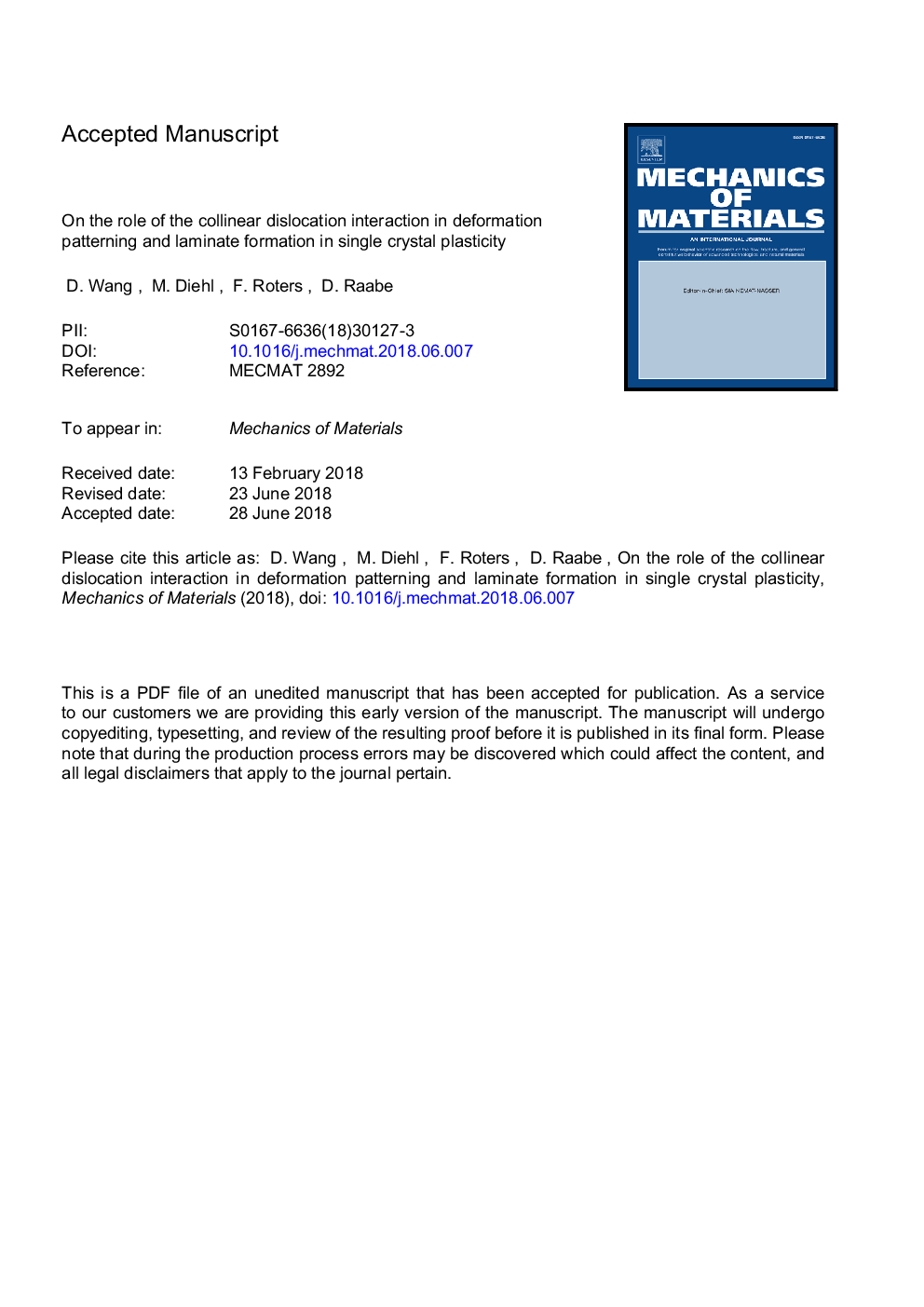| Article ID | Journal | Published Year | Pages | File Type |
|---|---|---|---|---|
| 7178474 | Mechanics of Materials | 2018 | 30 Pages |
Abstract
We investigate the reasons for severe deformation patterning observed in crystal plasticity simulations of an fcc nickel single crystal with initial near-Copper orientation deformed in plane strain compression. The resulting strain partitioning in the form of alternating parallel bands initiates at a very early loading stage, i.e. <0.5% global strain, and sharpens with ongoing deformation. At an applied average strain of 5.5%, the local strains finally deviate by half an order of magnitude in different regions of the initially homogeneous single crystal. We show that this microstructure lamination is the result of a complex interplay between available deformation systems, strain hardening, kinematics, and deformation energetics. Moreover, the boundary conditions play an important role as under the applied load two slip systems-which are collinear with respect to each other-have the same highest Schmid factor and therefore are preferentially activated. During strain hardening, the strong collinear interaction strength causes-depending on the initial deviation from the nominal orientation-the selection of a single prevalent slip system in clearly delimited regions. This behavior is explained by the lower global deformation energy in comparison to a homogeneous double slip behavior. We also reveal that the observed deformation pattern forms only for dislocation interaction strength values in the range predicted by discrete dislocation dynamic simulations.
Related Topics
Physical Sciences and Engineering
Engineering
Mechanical Engineering
Authors
Ding Wang, Martin Diehl, Franz Roters, Dierk Raabe,
